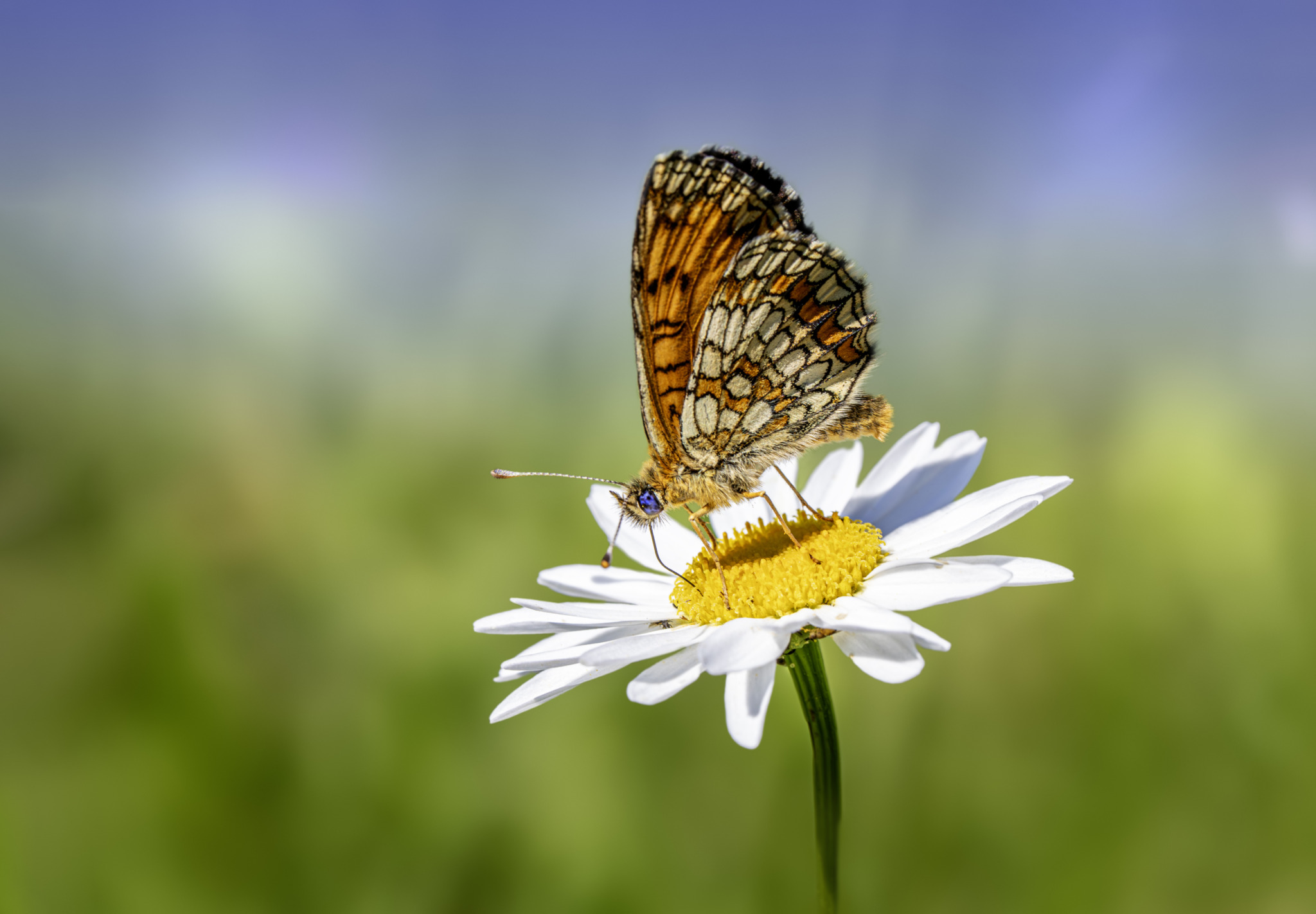The Melitaea parthenoides, commonly known as the Lesser Marbled Fritillary, is a striking butterfly found primarily in Europe. Known for its vibrant colors and distinctive patterns, it is a member of the family Nymphalidae and the subfamily Heliconiinae.
Description
- Appearance:
- Wingspan: The Lesser Marbled Fritillary typically has a wingspan of about 28-34 millimeters (1.1-1.3 inches).
- Coloration:
- Upper Side: The forewings are orange with black spots, and the hindwings are orange with a row of black spots and a broad dark margin. The overall appearance is quite vivid and patterned.
- Underside: The undersides of the wings are brown with pale orange and dark brown markings that provide camouflage when the butterfly is resting.
- Patterns: The butterfly features intricate and striking patterns, with a marbled effect that gives it its common name.
Habitat
- Distribution: The Lesser Marbled Fritillary is found across Europe, including areas from the Iberian Peninsula to Greece, and extending to parts of Asia Minor.
- Preferred Environment: It inhabits a variety of habitats, including meadows, grassy slopes, and areas with abundant wildflowers. It prefers sunny, open spaces with a variety of nectar sources.
Behavior and Ecology
- Diet:
- Larval Food Plants: The caterpillars feed on a range of plants, including species from the family Violaceae (violets), which are crucial for their development.
- Adult Food Sources: Adults feed on nectar from a variety of wildflowers, including thistles, knapweeds, and other nectar-rich plants.
- Breeding:
- Nesting: The eggs are laid on or near the food plants of the larvae. After hatching, the caterpillars feed on the leaves of these plants.
- Life Cycle: The Lesser Marbled Fritillary undergoes a complete metamorphosis from egg to larva (caterpillar), pupa (chrysalis), and finally to adult butterfly. The pupal stage is typically spent on the ground or in low vegetation.
- Behavior:
- Flight: This butterfly is known for its agile and rapid flight, often seen fluttering around flowers in search of nectar.
- Activity: It is typically active during the day, particularly in sunny weather, and can often be observed basking on warm surfaces.
Conservation
- Status: The Lesser Marbled Fritillary is generally not considered endangered, but its populations can be affected by habitat loss and changes in land use.
- Conservation Efforts: Protecting and restoring natural habitats, such as meadows and grassy areas, is important for maintaining the butterfly’s populations. Conservation efforts often include habitat management practices that support the growth of nectar-rich plants and larval food sources.
Observing Lesser Marbled Fritillaries
- Best Times: The Lesser Marbled Fritillary is usually active from late spring to early autumn, depending on the region.
- Watching Tips: Look for them in sunny, open areas with abundant wildflowers. Their vibrant colors and distinctive patterns make them relatively easy to spot among the vegetation.
Interesting Facts
- Camouflage: The marbled patterns on the underside of the wings help the Lesser Marbled Fritillary blend in with its surroundings when resting.
- Pollination: As with many butterflies, the Lesser Marbled Fritillary plays a role in pollination, transferring pollen between flowers as it feeds on nectar.
Summary
The Melitaea parthenoides, or Lesser Marbled Fritillary, is a vibrant and distinctive butterfly found across Europe and parts of Asia. With its striking orange and black wing patterns, it is a favorite among butterfly enthusiasts. Its habitat preferences include sunny meadows and grassy slopes, where it feeds on nectar and lays its eggs on violet plants. Conservation efforts focus on protecting its natural habitats and ensuring the availability of its food sources.
Views: 1347
Subscribe to the newsletter:
